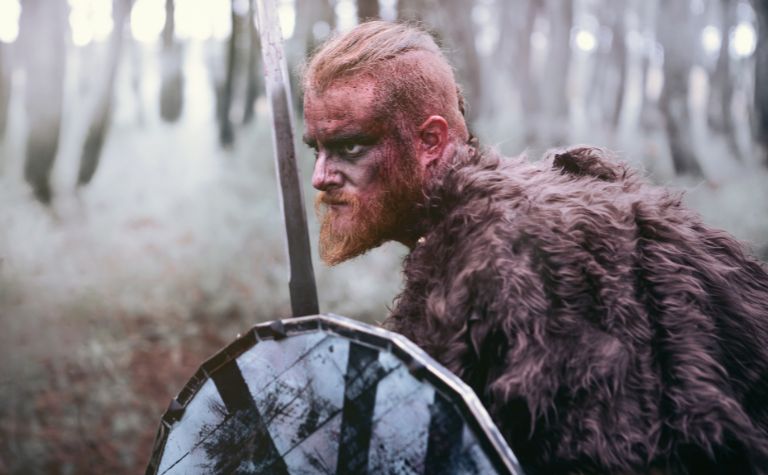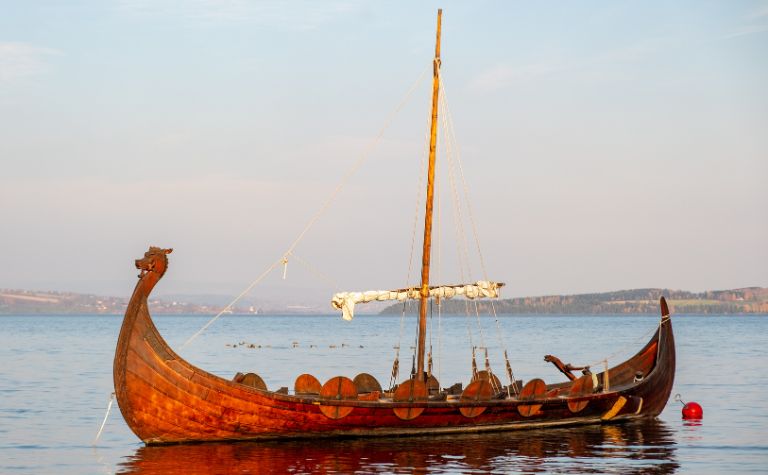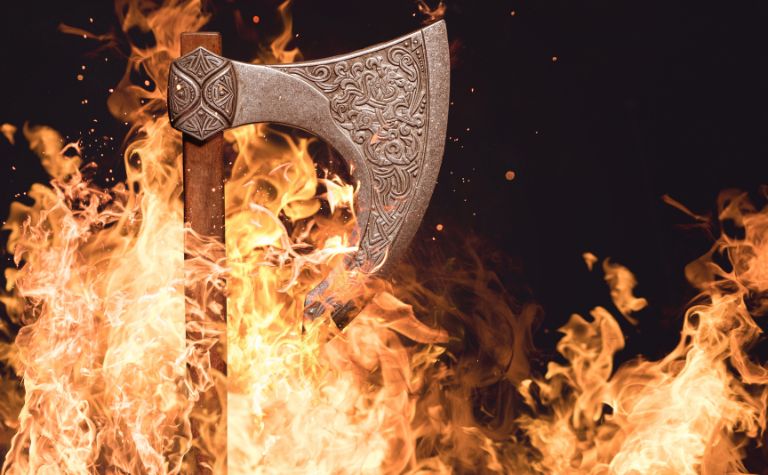Ragnar Lothbrok, portrayed by Travis Fimmel in the TV series “Vikings,” is a legendary Norse figure. He starts as a farmer and ascends to become a legendary Viking chieftain, famed for his raids on England and France.
His story is full of adventure and conflict. But how and when does he die in the show?
Ragnar Lothbrok dies in the 15th episode of the fourth season of “Vikings.” Captured by King Aelle of Northumbria, he is executed by being thrown into a pit of venomous snakes.
His death sparked a new wave of Viking invasions in England led by his sons.
What circumstances led to Ragnar’s capture? What is the backstory between Ragnar and King Alle? What happens after Ragnar dies? What is King Alle’s storyline? What does Blood Eagle have to do with Ragnar’s death?
Keep reading to learn the answers to these questions and others.
Also, see How Does Bjorn Ironside Die in Vikings? to learn more.

Who Kills Ragnar in Vikings and When?
Ragnar meets his end at the hands of King Aelle of Northumbria. This event occurs in the 15th episode of the fourth season, titled “All His Angels.”
The series depicts Ragnar being captured by the English after he travels there intentionally, fully aware of his impending doom.
The reasoning behind this self-sacrificial act is rooted in his desire to incite his sons to avenge him, thus sparking further invasions of England by the Vikings.
King Aelle, a recurring antagonist for Ragnar since the first season, is the one to carry out the execution.
He uses a particularly cruel method of execution, throwing Ragnar into a pit filled with venomous snakes.
Ragnar faces his death bravely, delivering a memorable speech about his beliefs and his fate, reaffirming his acceptance of his destiny and his eagerness to meet the gods in Valhalla.
His execution by King Aelle, while brutal, marks the beginning of a new era of Viking invasions in England as his sons, and especially Ivar the Boneless, swear to avenge his death.
What happens in Vikings after Ragnar dies?
Following the death of Ragnar the focus of the series shifts to his sons and their adventures, as they carry forward his legacy and continue to explore and raid new territories.
Ragnar’s death at the hands of King Aelle of Northumbria serves as a significant catalyst for these events.
As prophesied by Ragnar himself, his sons join together to avenge his death, forming the Great Heathen Army – one of the largest Viking forces ever assembled.
They successfully invade Northumbria and exact their revenge on King Aelle.
Among Ragnar’s sons, Ivar the Boneless becomes a central character in the series. Ivar is portrayed as a tactical genius but is also increasingly ruthless and unstable.
His relationship with his brothers becomes strained, leading to internal conflicts within the Viking community.
In addition to their exploits in England, Ragnar’s sons also undertake voyages to other regions. Bjorn Ironside, another of Ragnar’s sons, explores the Mediterranean and ventures as far as the Sahara.
Meanwhile, Ubbe and Hvitserk seek to fulfill their father’s dream of establishing a thriving Norse colony in fertile lands, leading them to an expedition to Iceland and, later, North America.
The series also delves deeper into Viking mythology and spirituality in the post-Ragnar era, including exploring the concept of “Valhalla,” the afterlife for those who have died in battle.

What is King Alle’s Storyline in Vikings?
King Aelle is introduced as an adversary to Ragnar. His storyline primarily revolves around his conflict with the Viking invaders and the subsequent political and military struggles that ensue.
King Aelle first encounters the Vikings when they raid Northumbria.
Despite their initial victories, the Vikings are eventually defeated in battle due to Aelle’s clever strategy.
However, rather than exterminating the Vikings, Aelle opts to negotiate with Ragnar.
This negotiation resulted in an uneasy peace marked by a substantial monetary payment to the Vikings, known as Danegeld.
As the series progresses, the relationship between King Aelle and the Vikings remains contentious.
He consistently plots and schemes against them, seeking alliances with other English kingdoms and even within the Viking leadership itself.
Aelle’s complex dealings and alliances, particularly with King Ecbert of Wessex, form a significant part of his storyline.
King Aelle’s narrative reaches its zenith in the fourth season.
Seizing the opportunity to rid himself of his longtime adversary, brutally executes Ragnar by throwing him into a pit of venomous snakes.
Ragnar’s death sets off a chain of events that drastically alters King Aelle’s fate.
His execution of Ragnar serves as a rallying point for Ragnar’s sons and the rest of the Viking army, who embark on the Great Heathen Army invasion of England to avenge their father’s death.
In an act of vengeance, they capture King Aelle and subject him to the gruesome Viking execution ritual known as the Blood Eagle, leading to his death.

What is Blood Eagle in Vikings?
The Blood Eagle is a method of execution. This brutal and ceremonial form of execution, alleged to be practiced by the real Vikings, is presented in the series as a ritualistic act of revenge intended for those who have committed grave offenses.
In the execution method depicted in the show, the person being executed is placed prone and restrained.
The executioner makes incisions along the victim’s back, severing the ribs from the spine.
The lungs are then pulled out through these openings and spread apart, creating an image reminiscent of an eagle with outstretched wings.
It’s implied that this is performed while the victim is still alive, making it a particularly cruel form of execution.
The Blood Eagle appears twice in Vikings
The first occurrence is in the second season when Ragnar Lothbrok executes Jarl Borg as retribution for Borg’s betrayal.
The second occurrence is in the fourth season, where Ragnar’s sons perform the Blood Eagle on King Aelle of Northumbria to avenge their father’s death.
While the Blood Eagle is a significant element of the series, it’s important to note that its historical accuracy is a subject of debate among scholars.
Some believe that the Blood Eagle was a real form of execution, while others argue that it may have been a misunderstanding or mistranslation from ancient Norse texts.
